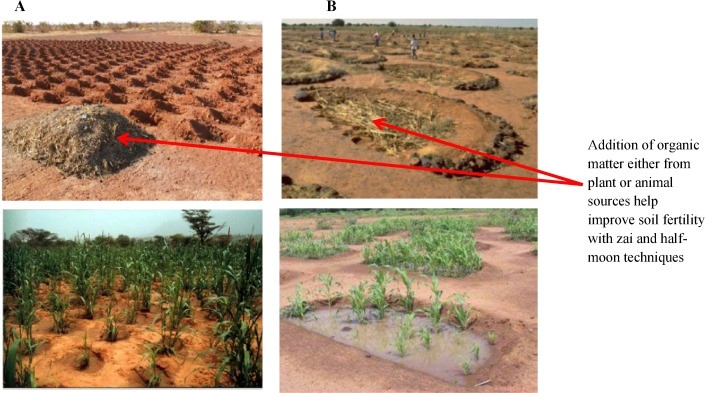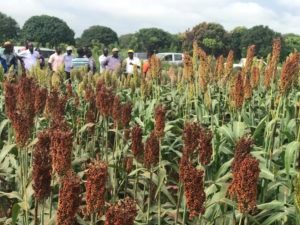MWAPE MOSES KACHASA
PART 1: BACKGROUND
It is a requirement under MSc Climate Change, Agriculture and Food Security (CCAFS) program at the University of Ireland – Galway (NUIG) for students to select a research topic to work on as part of a partial fulfillment for the award of the MSc. The research is normally carried out in-situ from a number of countries where the Consortium of International Agricultural Research Centers – Research program on Climate change, Agriculture and Food security (CGIAR- CCAFS) has already established some centres and it is done in close collaboration with partner institutions. For summer 2021 the students could not travel to countries where their research projects were supposed to be conducted from due to the presence of the covid-19 syndemic globally.
The research that I worked on will be highlighted through this blog post. The topic of my research was entitled; ‘Productivity differentials between adopters and non-adopters of Climate Smart Agriculture (CSA) practices amongst smallholder farmers in Northern Ghana’. The study focused on the sorghum producers.
The main objective of the research was; To measure and compare productivity differences between adopters and non-adopters of CSA practices in northern Ghana.
The specific objective was; To identify the main determinant in the adoption of the CSA practices.
PART 2: PROBLEM STATEMENT / THE CLIMATE CHANGE CRISIS
Studies indicate that despites several Government’s and partners’ support there is low adoption of Climate smart agriculture practices especially in the developing countries (Makate et al., 2019). Furthermore, there is limited information reporting on CSA in North Western Ghana. Therefore, the Productivity differentials between adopters and non-adopters of CSA practices have not been fully established especially in sorghum production.
The IPCC (2018) has highlighted how ecosystems, people and livelihoods have been negatively affected throughout the world by effects of climate variability and change. Ghana specifically, the agriculture sector has been affected by mainly uneven rainfall, late onset of rains in some regions, prolonged dry periods and increasing surface temperatures (Armah et al., 2011). Climate change is expected to increase the poverty levels in Sub Saharan Africa (SSA) because of its effects on agriculture, livestock, forestry and other sectors that provide livelihoods for the people in the region (Antwi-Agyei et al., 2021).
Among the strategies that have been identified to help address the challenges of climate change is CSA.
PART3: WHAT IS CLIMATE SMART AGRICULTURE (CSA)
CSA is an approach that holistically integrates economic, social and environmental sustainable development by jointly addressing food security and challenges posed by climate (FAO, 2013). The approach has three main pillars:
- Increasing agricultural productivity and farm incomes.
- Enhancing adaptation and building resilience to climate change.
- Removing or reducing all forms of greenhouse gas emissions.
There a number of CSA practices which smallholder farmers can adopt at farm level. They include plating different crops and varieties, growing drought tolerant crops, changing dates for planting, use of irrigation, soil and water conservation technologies and weather index crop insurance (Di Falco and Veronesi, 2013).

Figure 1: Organic sources of plant nutrients and water harvesting technologies under CSA.
Source: ScienceDirect.com
PART 4: THESIS STUDY AREA
The study was conducted in Jirapa and Lawra Districts of the Upper West Region (UWR) of North-Western Ghana. The districts are located in the Sudan Savannah agro-ecological zone with subsistence farming being the main economic activity for about 85,000 households (MoFA, 2016). The region is renowned for production of drought tolerant crops namely sorghum, yams and cowpeas in Ghana (MoFA, 2016). Smallholder farmers in the region also produce many other crops like maize, rice, millet, groundnuts, shea tree and okra (Djido et al., 2021).

Figure 2: Farmers and Technicians attending a Sorghum field day
Source: sari.csir.org.gh/sorghum-improvement
PART 5: TARGET POPULATION AND SAMPLING
The study targeted smallholder farmers from two Climate Smart Villages (CSVs) that have been established by CGIAR- CCAFS. The CSVs are Doggoh community in Jirapa and Bompari in Lawra. A total of 210 smallholder farmers were randomly sampled and a multi topic questionnaire was administered through person – person interviews.
PART 6: RESULTS
To determine the yield differences between adopters and non-adopters of CSA practices amongst smallholder sorghum growers in Northern Ghana 210 farmers were sampled and interviewed in February 2021.
The study showed that there was no significant difference between yields of sorghum obtained by adopters and non-adopters of CSA at p<0.05. Sorghum is well adapted to grow under different management practices. The crop is able to grow even under infertile soils where other cereals like maize may not grow very well (Mofokeng and Shargie, 2016).
Farming experience was found to be the main determinant for the adoption of CSA practices. The more years the farmers spend in farming the higher the willingness to adopt new improved technologies (Alam, 2015).
Acknowledgements
I wish to thank all my supervisors namely; Prof.Charles Spillane, Dr.Peter McKeown, Dr. Una Murray from the NUI-Galway. I am also greatly indebted to Dr. Abdoulaye Djido from ICRISAT Mali Office for the provision of the data sets and guidance he provided during the research.
References
Alam, K. (2015) ‘Farmers’ adaptation to water scarcity in drought-prone environments: A case study of Rajshahi District, Bangladesh’, Agricultural Water Management, 148, pp. 196-206.
Antwi-Agyei, P., Dougill, A. J., Doku-Marfo, J. and Abaidoo, R. C. (2021) ‘Understanding climate services for enhancing resilient agricultural systems in Anglophone West Africa: The case of Ghana’, Climate Services, 22, pp. 100218.
Armah, F. A., Odoi, J. O., Yengoh, G. T., Obiri, S., Yawson, D. O. and Afrifa, E. K. (2011) ‘Food security and climate change in drought-sensitive savanna zones of Ghana’, Mitigation and adaptation strategies for global change, 16(3), pp. 291-306.
Di Falco, S. and Veronesi, M. (2013) ‘How can African agriculture adapt to climate change? A counterfactual analysis from Ethiopia’, Land Economics, 89(4), pp. 743-766.
Djido, A., Zougmoré, R. B., Houessionon, P., Ouédraogo, M., Ouédraogo, I. and Diouf, N. S. (2021) ‘To what extent do weather and climate information services drive the adoption of climate-smart agriculture practices in Ghana?’, Climate Risk Management, 32, pp. 100309.
FAO (2013) ‘Climate-smart agriculture: sourcebook’, Climate-smart agriculture: sourcebook.
IPCC (2018) Global warming of 1.5° C: an IPCC special report on the impacts of global warming of 1.5° C above pre-industrial levels and related global greenhouse gas emission pathways, in the context of strengthening the global response to the threat of climate change, sustainable development, and efforts to eradicate poverty. Intergovernmental Panel on Climate Change.
Makate, C., Makate, M., Mango, N. and Siziba, S. (2019) ‘Increasing resilience of smallholder farmers to climate change through multiple adoption of proven climate-smart agriculture innovations. Lessons from Southern Africa’, J Environ Manage, 231, pp. 858-868.
MoFA (2016) ‘Agriculture in Ghana: Facts and Figures 2016. Statistics, Research, and Information Directorate (SRID), Ministry of Food & Agriculture (MoFA), Accra, Ghana’.
Mofokeng, M. and Shargie, N. (2016) ‘Bird damage and control strategies in grain sorghum produciton’, International journal of agricultural and environmental research, 2(4), pp. 264-269.
